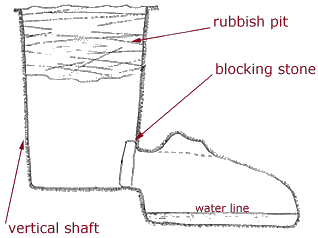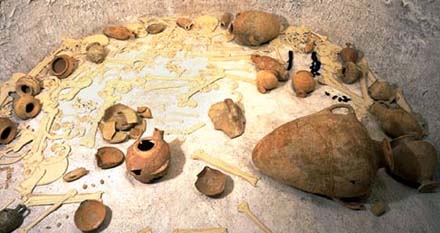
|
| How Were People Buried? |
|
In the ancient Near East burial, rather than cremation, was usually practiced. This tomb, called Tomb P1 by archaeologists, is from the ancient city of Jericho. It shows us one type of a Near Eastern tomb in its shape and in the contents buried inside. |
 |
| A mound of rubble concealed a vertical rock cut shaft leading into an underground chamber, measuring approximately 10 x 11.5 feet, closed off by a large blocking stone. Inside the chamber, archaeologists discovered 24 skeletons! The custom of multiple burials, common during this time period, suited the needs of extended families living in crowded towns. When a member of the family died, their body was added to the tomb. |
| What Was Buried with Them? |
| The large number of offerings found in the tomb included pottery, wooden vessels, fragments from wooden furniture, small alabaster jars for holding oils and scents, decorated bone inlay from wooden boxes, and scarab seals and amulets. This reconstruction of Tomb P1 (in the galleries of the Carlos Museum) shows some of the objects from the burial, but the skeletons have been replaced by cardboard cutouts to show where the bones were found. |
 |
 |
 |
 |
 |
 |
 |
 |
© Michael C. Carlos Museum of Emory University,
Memorial Art Gallery of the University of Rochester and Dallas Museum of Art
For more information please contact odyssey@emory.edu.
Last Update: